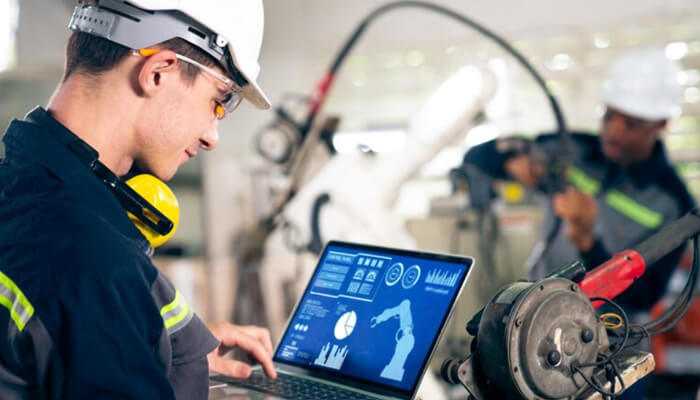Modern businesses are under growing pressure to improve asset performance, minimise downtime and reduce maintenance costs. For many, the shift from reactive approaches to proactive maintenance strategies is a critical step forward. But how much maintenance time do companies spend on activities that are preventative and predictive? And is the time and money invested worth the effort?
This article explores how maintenance teams distribute their time between preventive maintenance and predictive maintenance. It also examines the real-world benefits of adopting predictive maintenance, how data is used to inform decisions, and how advanced tools can streamline these processes. Companies looking to modernise their maintenance practices can also explore the best preventative maintenance software to improve productivity and reliability.
Preventive and Predictive Maintenance Defined
Preventive maintenance involves scheduling regular maintenance tasks based on time, usage or OEM recommendations. It includes routine maintenance tasks like lubrication, filter replacement, inspection and cleaning. The goal is to avoid equipment failures by maintaining assets before problems arise.
Predictive maintenance takes this a step further. It relies on data from condition monitoring techniques such as vibration analysis, oil analysis, and motor circuit analysis to determine when maintenance should be performed. This strategy often requires advanced data analysis tools and machine learning to predict failures before they happen.
Both approaches fall under the umbrella of proactive maintenance strategies and are designed to reduce unplanned downtime and improve asset reliability.
How Much Time Is Spent on Preventive and Predictive Maintenance?
According to industry surveys, maintenance technicians in industrial settings typically spend around 30 to 50 percent of their time on preventive maintenance tasks. These include scheduled inspections, parts replacements and general upkeep. Larger organisations with mature maintenance management processes may dedicate even more time, depending on asset criticality and regulatory requirements.
Predictive maintenance requires less frequent but more specialised attention. It usually accounts for 10 to 20 percent of maintenance time, especially in sectors like manufacturing and the oil and gas industry. However, this number is growing as more companies adopt condition based maintenance approaches using refrigeration sensors, vibration analysis, and other sensor technologies.
Maintenance professionals are beginning to recognise that while predictive maintenance has a higher upfront cost, it significantly reduces unnecessary maintenance, lowers maintenance costs over time and leads to better asset performance.
Why Preventive and Predictive Maintenance Is on the Rise
Maintenance strategies are evolving in response to the limitations of reactive and corrective maintenance. Reactive maintenance deals with breakdowns as they occur, leading to unexpected downtime, high labour costs and increased downtime costs. It also puts strain on maintenance teams who must act fast to restore operations.
Preventive maintenance programs help reduce this burden by identifying and addressing issues early. However, they are not always efficient. Regular maintenance on assets that don’t require it can lead to unnecessary labour and parts use. That’s where predictive maintenance offers a more refined approach.
Predictive maintenance uses data collection from sensors and historical data analysis to identify patterns that indicate potential failures. This enables companies to perform maintenance work only when needed, preventing unexpected breakdowns and extending the life of aging equipment.
The Role of Technology in Predictive Maintenance
Predictive maintenance requires a robust data infrastructure. Companies must collect data from equipment using Internet of Things (IoT) sensors, then analyse it using artificial intelligence or machine learning algorithms to detect signs of wear or failure. This process involves data scientists, maintenance professionals and operations teams working together to develop effective maintenance techniques.
Big data analytics and AI allow companies to track changes in temperature, vibration and power consumption, all of which contribute to more accurate failure predictions. Condition monitoring techniques such as thermography, ultrasonic testing and motor circuit analysis are increasingly used in this process.
By using predictive maintenance, businesses can focus on critical assets, improve uptime, and make their maintenance activities more cost effective. In time, this leads to substantial cost savings and improved production hours.
Maintenance Time vs Results: What’s the Payoff?
Spending more time on preventive and predictive maintenance may seem like an added burden, but it results in reduced downtime, improved safety and better overall equipment effectiveness.
In sectors such as the gas industry and heavy manufacturing, predictive maintenance can cut maintenance costs by as much as 25 percent while reducing machine downtime by up to 50 percent. The return on investment is clear when companies compare the cost of a predictive maintenance program with the associated costs of reactive repairs, production loss and labour.
Organisations also see improved scheduling of maintenance options, less time spent on emergency callouts, and better coordination of spare parts and inventory. Maintenance management software further streamlines these processes by providing insights into asset performance, maintenance history and risk.
Balancing Preventive, Predictive and Other Maintenance Strategies
No single approach works in isolation. Successful companies adopt a mix of maintenance strategies based on asset type, operating environment and criticality. This might include:
1. Preventive maintenance strategies for standard assets requiring regular servicing
2. Predictive maintenance for high-value or high-risk equipment
3. Corrective maintenance for low-priority items or where repair is more economical
4. Reliability centered maintenance (RCM) to balance all maintenance options based on risk and cost
Total productive maintenance (TPM) is another approach that combines maintenance with broader operational goals, empowering operators to take ownership of basic maintenance tasks and freeing up maintenance technicians for more complex jobs.
By combining different strategies, companies can better manage their maintenance activities and achieve lower maintenance costs without sacrificing reliability.
Key Challenges in Shifting to Predictive Maintenance
Adopting predictive maintenance comes with challenges. The upfront cost of sensors, software and training can be a barrier. Data collection systems must be reliable and secure. Maintenance teams must also learn to trust data-driven decision-making over traditional visual inspections.
In some cases, outdated equipment may not support modern condition monitoring systems. This can delay adoption, especially in older facilities or in sectors where capital investment is limited.
However, the significant benefits of predictive maintenance—including reduced downtime, improved asset reliability and cost savings—mean more companies are willing to invest in long-term transformation.
Final Thoughts
So how much maintenance time do companies spend on activities that are preventative and predictive? The answer varies by industry, asset type and maturity of the maintenance strategy. But what’s clear is that investing time in proactive maintenance pays off. Companies that commit to regular maintenance schedules and embrace condition based technologies see fewer equipment failures, lower labour costs and increased asset performance.
As predictive maintenance becomes more accessible through user-friendly platforms and analytics tools, it is likely to account for a larger share of maintenance work in the years to come. Businesses that act early to modernize their maintenance practices will enjoy the benefits of improved uptime, fewer unexpected breakdowns and a more efficient use of resources.



